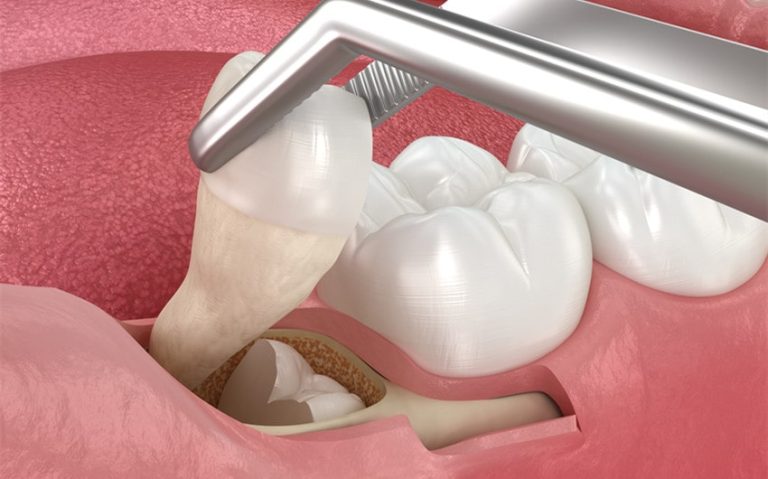Nausea, a common yet distressing symptom, can arise from various causes, ranging from simple indigestion to more complex medical conditions. Amidst numerous remedies, one often wonders which side to lay on for nausea relief.
This article delves into this simple yet intriguing question, shedding light on how a mere change in position can significantly impact our well-being.
Body Positioning and Its Effects on Digestion

The role of body positioning in the digestive process is a topic that garners considerable attention, especially when addressing discomforts like nausea. The human body, while lying down, undergoes several physiological changes that impact the digestive system.
When upright, gravity naturally assists the movement of food through the digestive tract. This vertical alignment aids in the efficient processing of food, from swallowing to the eventual absorption of nutrients in the intestines. However, when we change our position, especially when lying down, this gravitational assistance is reduced.
Lying flat can hinder the process of digestion. In this position, there is a potential for the stomach contents to stagnate or move less efficiently, leading to delayed gastric emptying. This delay can cause discomfort and a feeling of fullness, which are precursors to nausea.
Furthermore, lying down immediately after eating can increase the likelihood of gastroesophageal reflux. In this condition, the contents of the stomach, including acid, can travel back into the esophagus, leading to heartburn and nausea.
The esophageal sphincter, a valve-like structure at the junction of the stomach and esophagus, is more likely to relax inappropriately when one is in a horizontal position. This relaxation can facilitate reflux, which is often accompanied by a nauseous sensation.
On the other hand, lying on one’s side, particularly the left side, offers a unique advantage. The stomach, being asymmetrically positioned in the body, empties its contents more effectively when one lies on the left side. This position aligns the stomach in a way that utilizes gravity to promote digestion, thereby reducing the risk of reflux and the subsequent feeling of nausea.
In summary, the impact of body positioning on digestion is significant. While standing or sitting upright favors the natural course of digestion, lying down, especially flat on the back, can hinder the process and potentially lead to digestive discomforts like nausea.
This understanding forms the basis for exploring specific postural recommendations to alleviate such symptoms, particularly the preference for lying on one’s side.
The Science Behind Laying on Your Side

The act of lying on one’s side, especially in the context of nausea relief, is more than just a comfort measure; it’s rooted in scientific understanding of human anatomy and physiology. This section explores how lying on the side affects the digestive system and can potentially alleviate symptoms of nausea.
1. Anatomical Considerations
The human stomach is asymmetrically positioned in the abdomen, with its axis running from left to right. When lying on the left side, the stomach’s natural position allows for gravity to facilitate the movement of its contents towards the pyloric valve, which leads to the small intestine.
This assists in smoother digestion and faster transit of food, reducing the likelihood of discomfort and nausea.
The esophagus enters the stomach from the right side. Lying on the left side keeps the gastric fluids lower than the esophagus, reducing the risk of acid reflux. Acid reflux can cause a burning sensation and contribute to feelings of nausea.
2. Gastrointestinal Motility
The process of peristalsis, which moves food through the digestive tract, can be influenced by gravity when one lies on their side. This position can help move food more efficiently through the stomach and intestines, reducing the risk of indigestion and the associated nausea.
For individuals with delayed gastric emptying or gastroparesis, lying on the left side may aid in more effective stomach emptying, alleviating symptoms of fullness, bloating, and nausea.
3. Impact on the Lower Esophageal Sphincter (LES)
The LES acts as a barrier to prevent stomach contents from refluxing into the esophagus. When lying on the right side, this sphincter can become relaxed, allowing for backflow of stomach acids, which can lead to heartburn and nausea. Lying on the left side helps maintain the tone and function of the LES, reducing this risk.
4. Lymphatic Drainage and Blood Flow
Lying on the left side not only benefits digestion but also enhances lymphatic drainage from the abdominal area and improves circulation back to the heart. This can have a secondary effect on reducing gastrointestinal inflammation and promoting overall digestive health, potentially reducing nausea.
In conclusion, the science behind lying on one’s side, particularly the left side, for nausea relief is grounded in how this position optimally aligns the digestive organs. This alignment aids in efficient digestion, reduces the risk of acid reflux, and promotes smoother gastrointestinal functioning, all of which can contribute to alleviating nausea.
Comparing Left Side vs. Right Side

In the context of alleviating nausea through body positioning, it’s crucial to understand the differences between lying on the left side versus the right side. Both positions impact the digestive system differently, and this section aims to elucidate these distinctions:
1. Lying on the Left Side
- Enhanced Digestive Process: As the stomach lies on the left side of the body, this position allows for gravity to facilitate the movement of food through the digestive tract more efficiently. It aids in the smoother passage of stomach contents into the small intestine.
- Reduced Acid Reflux: Lying on the left side can decrease the likelihood of acid reflux. The stomach’s positioning below the esophagus in this posture minimizes the backflow of stomach acids, thus reducing heartburn and associated nausea.
- Beneficial for Gastric Emptying: This position is particularly advantageous for individuals with conditions like gastroparesis, as it can help in better gastric emptying, thereby alleviating symptoms of nausea and bloating.
2. Lying on the Right Side
- Potential for Delayed Digestion: In contrast, lying on the right side can slow down the process of digestion. Food and stomach acids can pool in the stomach, leading to delayed gastric emptying and discomfort.
- Increased Risk of Acid Reflux: This position can exacerbate gastroesophageal reflux. The esophageal sphincter may not function as effectively, allowing stomach acids to travel back into the esophagus, increasing the risk of nausea.
- Impact on Heart Function: Lying on the right side can exert pressure on the heart and reduce cardiac efficiency, although this is more of a concern for individuals with pre-existing heart conditions.
In summary, while both positions impact digestion, lying on the left side is generally more favorable for reducing nausea. This position optimizes digestive processes, minimizes the risk of acid reflux, and is better suited for individuals with certain gastrointestinal issues.
Conversely, lying on the right side can hinder these processes and potentially exacerbate symptoms of nausea and indigestion. These distinctions underline the importance of body positioning as a simple yet effective strategy in managing digestive discomfort.
Additional Remedies and Considerations

While lying on the left side can be an effective strategy for alleviating nausea, it is important to consider additional remedies and factors that can contribute to overall digestive health and nausea management.
1. Hydration
Proper hydration is essential for good digestion. Drinking enough water can help in breaking down food and absorbing nutrients efficiently. It also aids in preventing constipation, which can be a contributing factor to nausea.
2. Dietary Adjustments
- Eating Small, Frequent Meals: Consuming smaller, more frequent meals can help in managing nausea by preventing the stomach from becoming too full.
- Avoiding Trigger Foods: Identifying and avoiding foods that trigger nausea or digestive discomfort is crucial. Common culprits include spicy, fatty, or very rich foods.
- Ginger and Peppermint: Incorporating natural remedies like ginger and peppermint, known for their anti-nausea properties, can be beneficial. These can be taken in the form of tea, supplements, or natural forms.
3. Medications
- Over-the-Counter Options: Antacids, antiemetics, or antihistamines can be used to manage symptoms of nausea, but should be taken under the guidance of a healthcare professional.
- Prescription Medications: For chronic or severe cases, prescription medications may be necessary and should be discussed with a healthcare provider.
- Stress Management and Relaxation Techniques: Stress and anxiety can exacerbate symptoms of nausea. Engaging in relaxation techniques such as deep breathing exercises, meditation, or gentle yoga can help in reducing stress-related nausea.
- Sleep and Rest: Ensuring adequate sleep and rest is important. Fatigue can worsen the symptoms of nausea, so maintaining a regular sleep schedule can be beneficial.
4. When to Seek Medical Attention
Persistent or severe nausea should not be overlooked, as it can be a sign of a more serious underlying condition. If nausea is accompanied by symptoms like severe abdominal pain, vomiting, fever, or significant weight loss, it is essential to consult a healthcare professional.
In conclusion, while positioning oneself on the left side can be a simple and effective measure for alleviating nausea, it is part of a broader strategy that includes hydration, dietary management, stress reduction, and appropriate use of medications.
Understanding and addressing the various factors that contribute to nausea can lead to more effective and comprehensive management of this condition.
Conclusion
In conclusion, while there are various ways to manage nausea, understanding which side to lay on can offer an easy and effective solution. Laying on the left side is generally more beneficial for nausea relief, backed by anatomical and physiological reasoning. However, it’s important to consider other remedies and seek medical advice when necessary, as nausea can sometimes be a symptom of a more serious condition.







